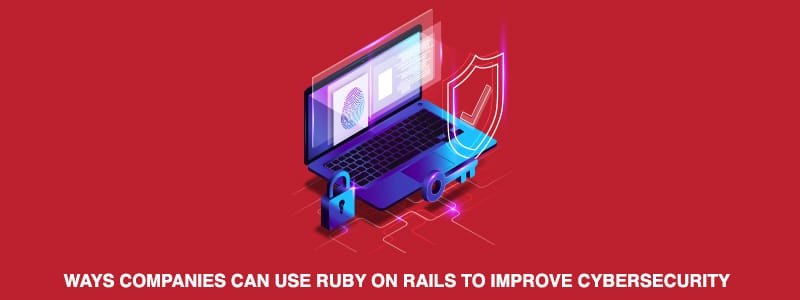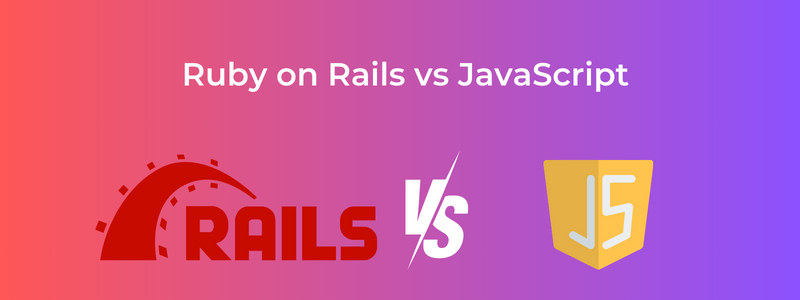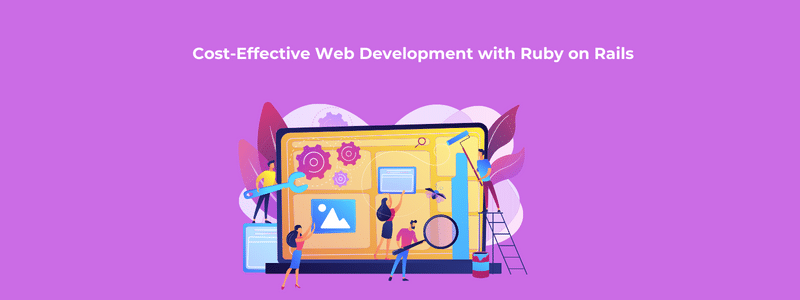Cybersecurity is no longer a luxury or an afterthought; with an increasing number of businesses going digital, safeguarding data and web assets has become an immediate concern. The best way to secure a business is by incorporating robust security features from the ground up, and Ruby on Rails (RoR) is a framework that facilitates exactly this. Known for its simplicity and reliability, RoR also possesses various tools and libraries to ensure top-notch security for your applications.
Ruby on Rails Tools and Libraries
1. Use Built-in Security Features
Ruby on Rails comes pre-packed with a number of built-in security measures designed to help protect applications from vulnerabilities like SQL injection, Cross-Site Scripting (XSS), and Cross-Site Request Forgery (CSRF). RoR takes a “convention over configuration” approach, which inherently minimizes the chances of security holes appearing in the application.
Active Record
Active Record, which is Rails’ Object-Relational Mapping (ORM) system, helps to sanitize database queries by default. This makes it difficult for attackers to manipulate SQL queries and access unauthorized data.
Secure Cookies
RoR provides encrypted cookies to store session data securely. This makes it much harder for an attacker to intercept and tamper with the cookies.
2. Strong Parameters
Strong parameters act as an interface for protecting attributes from end-user injection. By specifying which keys are permitted in a model, you protect the application from harmful injections.
3. Regular Updates
Consistently updating the Rails framework is crucial. Security patches and updates are frequently released to address any newly discovered vulnerabilities. The Rails community is highly vigilant, and the availability of updates is frequent and reliable.
4. HTTPS Encryption
For encrypting data between the client and server, Rails makes it easy to implement HTTPS. By simply adding a single line in the config/environments/production.rb file, you force all access to the app over SSL:
5. Content Security Policy (CSP)
Ruby on Rails allows you to implement Content Security Policy headers to protect against different kinds of code injection attacks. CSP provides a systematic way to specify which scripts are authorized to run on a webpage, effectively guarding against XSS attacks.
6. Custom Authentication
While there are several gems like Devise that offer pre-built authentication features, Rails also allows you to build custom authentication systems tailored specifically to your needs. This is essential for companies dealing with particularly sensitive information.
7. Data Encryption
Encrypting sensitive data before storing it in the database is a best practice that can be easily implemented in Rails applications. Gems like attr_encrypted can automatically encrypt and decrypt attributes as needed.
8. Two-Factor Authentication
For an added layer of security, consider integrating two-factor authentication (2FA). Several gems, like two_factor_authentication, make this process straightforward.
9. Audit Logs
Maintaining a comprehensive audit trail is vital for cybersecurity. Gems like audited can help track changes to your models, aiding in data integrity and accountability.
10. Rate Limiting
Rate limiting is another essential security measure that can be implemented effortlessly in a Rails application. This prevents any individual IP address from making too many requests within a given timeframe, making brute-force attacks far more difficult.
Ruby on Rails Gems Strengthening Cybersecurity
When it comes to web development, Ruby on Rails (RoR) is often praised for its ease of use, speed, and general developer-friendly atmosphere. However, what’s often overlooked is how RoR can also serve as a robust platform for bolstering cybersecurity. One of the primary ways Rails achieves this is through its vast ecosystem of gems—prepackaged modules that add functionality or enhance existing features. This article shines a spotlight on some of these gems specifically tailored for strengthening cybersecurity in your Rails applications.
Devise: The All-in-One Solution for User Authentication
Let’s start with one of the most popular gems for user authentication—Devise. Devise is like a Swiss Army knife when it comes to user management. It provides a full suite of modules including password resets, email confirmations, and user sessions, all baked in with good security practices. If you want to add Two-Factor Authentication (2FA) into the mix, Devise supports that as well. It’s a one-stop-shop for many of your user authentication needs, and it keeps security tight and integrated.
Bcrypt: Safeguarding User Passwords
Storing user passwords securely is a non-negotiable requirement. The bcrypt gem provides a strong hashing algorithm to securely hash and store passwords. Unlike more straightforward methods that are easier to crack, bcrypt hashes are computationally intensive to decode. This slows down any potential brute-force attacks, making your user data more secure.
Pundit: Clean and Robust Authorization
Authorization is the gatekeeper that defines what resources a user can access. Pundit is a gem that makes authorization clean, easy, and secure. Its policy-based permissions provide an organized way to manage user roles and what they are allowed to do or see. This structured approach makes it less likely that you’ll overlook potential loopholes in your authorization logic.
SecureHeaders: HTTP Security Headers Made Easy
The SecureHeaders gem ensures that your application utilizes best practices when it comes to HTTP security headers. These headers can force the browser to interact with your site in a way that reduces security risks, like clickjacking and cross-site scripting (XSS) attacks. With SecureHeaders, you can ensure that all communications between the client and server are as secure as possible.
Brakeman: Code Security Scanner
Think of Brakeman as a security watchdog for your codebase. This gem scans your application for common vulnerabilities and provides a comprehensive report. This isn’t just about finding issues after they’ve been exploited; Brakeman helps you catch potential security risks before they become problems, making it an essential tool in proactive security measures.
Rack-Attack: Thwarting Brute-force and DDoS Attacks
Sometimes security is about keeping people out, and Rack-Attack is excellent at this. It allows you to rate-limit requests, throttle login attempts from suspicious IPs, and block malicious activity. This helps to safeguard against brute-force attacks and Distributed Denial of Service (DDoS) attacks, ensuring that your application remains robust under stress.
PaperTrail: For Detailed Auditing
Auditing is like having security cameras for your data—knowing who did what and when. The PaperTrail gem offers robust, flexible auditing capabilities. It keeps track of how your data is being manipulated, who is manipulating it, and when these manipulations occurred. In the case of a data breach or other security issues, these audit trails are invaluable for identifying what went wrong.
JWT: Secure Token-Based Authentication
The JSON Web Token (JWT) gem is ideal for applications that require secure, token-based authentication, particularly for APIs. Tokens can be encrypted and securely transmitted between parties, ensuring that data integrity and privacy are maintained.
Cybersecurity Application Challenges in Today’s Digital Landscape
In today’s hyperconnected world, cybersecurity is more than just a buzzword—it’s a necessity. Businesses, government agencies, and individuals alike rely on various applications to manage their financial transactions, personal information, and more. While these applications provide unprecedented convenience and operational efficiency, they also present a wide array of challenges in the cybersecurity arena. Below are some of the most pressing issues that developers, administrators, and users face in securing applications.
- Rapid Technological Advancements
As technology evolves, so do the tools and tactics used by cybercriminals. Keeping up with the rapid pace of technological change is often a significant challenge. It’s like an arms race: as soon as a new security feature is implemented, hackers are already working on ways to break it. This constant evolution requires vigilance and ongoing efforts to stay ahead of potential security threats.
- Complexity and Integration
Today’s applications are not standalone products; they often integrate with other systems, databases, and third-party services. While this interconnectedness offers excellent functionality, it also creates multiple entry points that could be exploited by attackers. Managing the security of such complex systems requires specialized knowledge and a comprehensive approach to cover all potential vulnerabilities.
- Human Error
The weakest link in any cybersecurity chain is often the human element. Be it using weak passwords, falling for phishing attacks, or inadvertently downloading malware, human error can expose even the most robust systems to security breaches. Educating end-users on best practices for cybersecurity is an ongoing challenge.
- Zero-Day Exploits
These are vulnerabilities that are unknown to the software vendor, meaning that there is no patch or fix available when they are discovered. Attackers exploiting zero-day vulnerabilities can potentially cause a great deal of damage before a security patch is released.
- Scalability Issues
As a business grows, its cybersecurity measures must scale along with it. However, what worked for a small team of ten people may not be sufficient for an organization of thousands. Scaling security measures without compromising on efficiency or user experience is a challenge many businesses face.
- Data Privacy Regulations
Laws like the European Union’s General Data Protection Regulation (GDPR) and California’s Consumer Privacy Act (CCPA) impose stringent requirements on how data is collected, stored, and protected. Adhering to these regulations while still offering a seamless user experience can be a complicated tightrope to walk.
- Resource Limitations
Effective cybersecurity often requires significant investment in terms of both time and money. For startups and smaller businesses, dedicating adequate resources to robust cybersecurity measures may not always be feasible. This lack of resources can lead to cut corners, making these organizations attractive targets for cybercriminals.
- Insider Threats
Sometimes, the threat comes from within the organization. Disgruntled employees or those with malicious intentions can abuse their access to sensitive information. Monitoring and mitigating insider threats require a different set of tools and strategies compared to defending against external attacks.
- Supply Chain Vulnerabilities
Companies often rely on third-party vendors for various services, and each of these external entities might have different levels of cybersecurity readiness. A vulnerability in a third-party system can potentially expose the primary organization to risks, making supply chain security a growing concern.
Different Kinds of Cybersecurity Applications: A Human-Friendly Guide
In today’s digitized world, cybersecurity isn’t just about having a solid password; it’s a multifaceted endeavor that involves various types of applications designed to protect networks, systems, and data. So, let’s ditch the jargon and dive into the different kinds of cybersecurity applications out there—explained in a way that even your grandma could understand!
Antivirus Software: The Digital Flu Shot
Imagine your computer like your body. Just as you get a flu shot to ward off illness, antivirus software acts as a digital flu shot for your computer. This type of application scans your computer for malicious software, often referred to as ‘malware,’ and gets rid of it before it can wreak havoc on your system.
Firewall: The Bouncer at a VIP Club
Think of a firewall like the bouncer at an exclusive VIP club. Its job is to decide who gets in and who stays out. When it comes to your computer, the firewall screens incoming and outgoing traffic to ensure that only safe data passes through. If something or someone sketchy tries to gain access, the firewall blocks it right at the door.
Virtual Private Network (VPN): The Invisible Cloak
Imagine you’re Harry Potter with an invisible cloak, hiding from the bad guys. A VPN essentially gives your online activities an invisible cloak that keeps them hidden from prying eyes. It masks your internet protocol (IP) address so that your online actions are virtually untraceable.
Encryption Software: The Secret Code
Remember those decoder rings from cereal boxes or secret languages you might have created as a kid? Encryption software turns your data into a secret code. If someone tries to access it without the ‘key,’ they’ll find a jumbled mess rather than useful information.
Password Managers: The Digital Diary Lock
Did you have a diary with a tiny lock and key as a kid? Password managers are the digital equivalent. They store all your passwords in one secure ‘vault,’ locked behind a master password. That way, you don’t have to remember dozens of passwords—just the one to unlock your secure vault.
Intrusion Detection System (IDS): The Alarm System
Much like a home alarm system that alerts you when someone breaks a window or opens a door, an IDS monitors network traffic for any suspicious activity or violations. If something fishy is detected, it sends out an alarm to let the system administrator know.
Data Backup Software: The Safety Net
We all make mistakes—like accidentally deleting that important family photo or work document. Data backup software acts like a safety net, storing copies of your files so you can retrieve them if something goes wrong.
Secure Web Browsers: The Shielded Explorer
You wouldn’t go exploring a dangerous jungle without some protection, right? Secure web browsers act like a shield, protecting you as you explore the internet. They block pop-up ads, warn you about sketchy websites, and help keep your online activities safe from malware and other threats.
Patch Management Tools: The Fixer-Uppers
You wouldn’t drive a car with a flat tire or a broken engine, would you? Patch management tools are the mechanics that fix the ‘flats’ and ‘breaks’ in your software. They ensure you’re running the latest, most secure versions of all your applications, plugging any holes that could leave you vulnerable to attacks.
Conclusion
Ruby on Rails not only makes it easy to develop robust, scalable applications, but it also provides an arsenal of tools to bolster cybersecurity. From its built-in security mechanisms to the vast array of security-focused gems, Rails offers a comprehensive toolkit for creating secure applications.
In today’s world, where cyber threats loom large, investing time and resources into cybersecurity is not just a wise decision but a mandatory practice. Ruby on Rails makes this easier and more efficient, allowing businesses to focus on innovation and growth without compromising on security.




